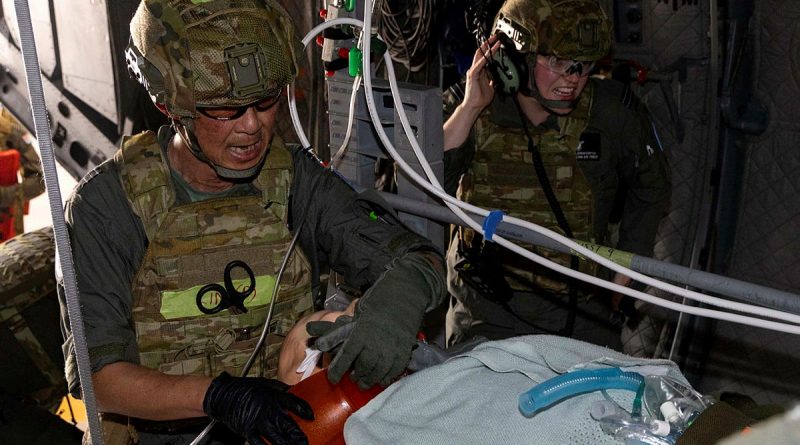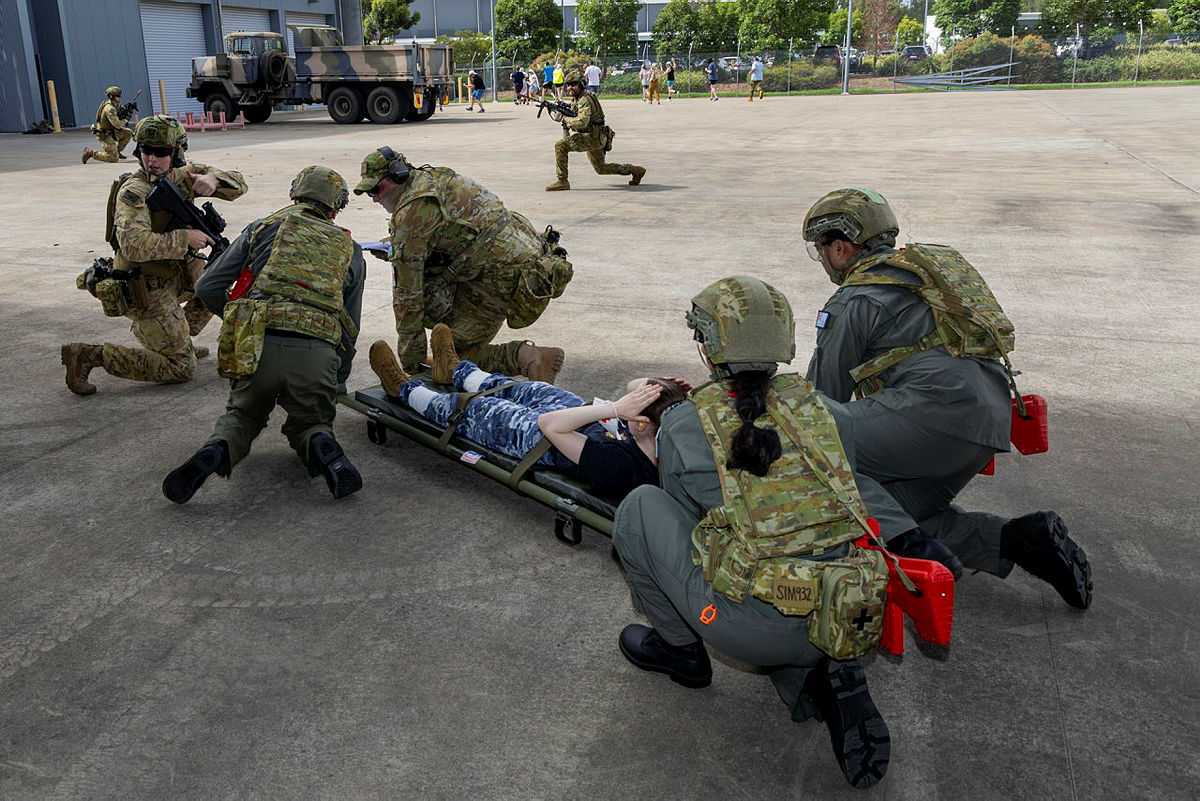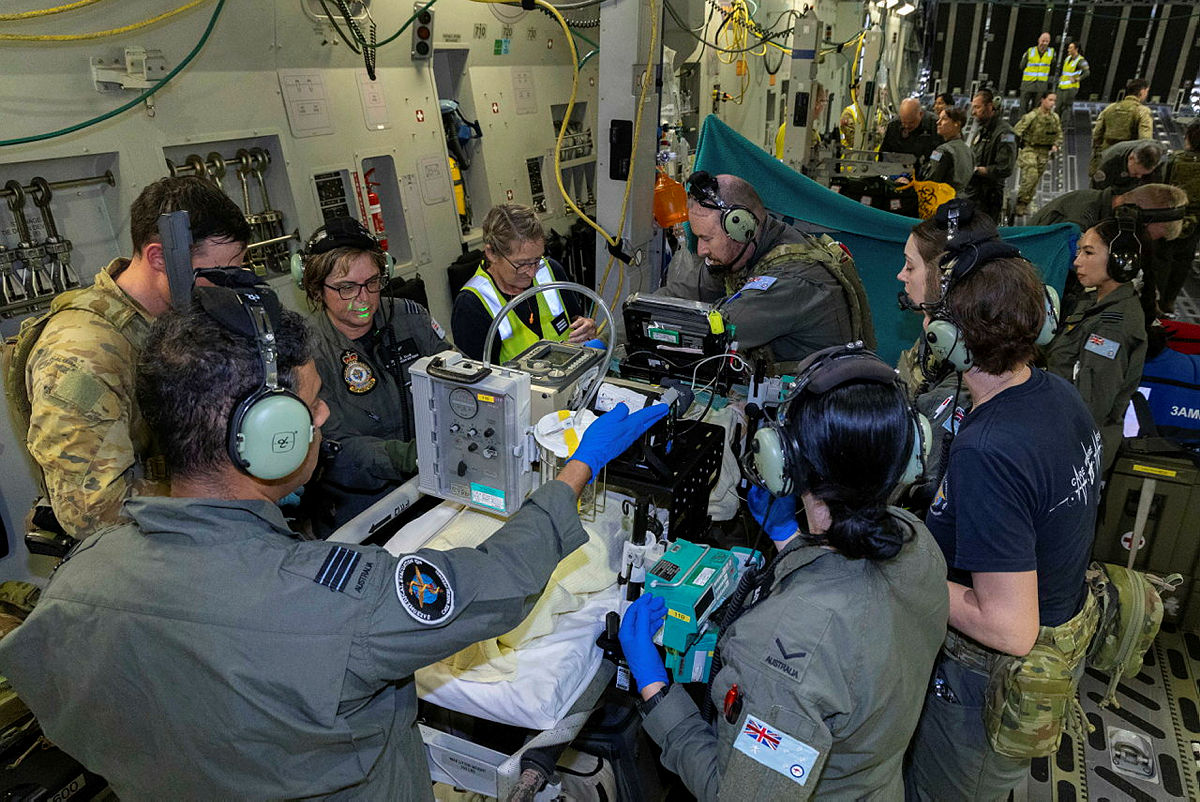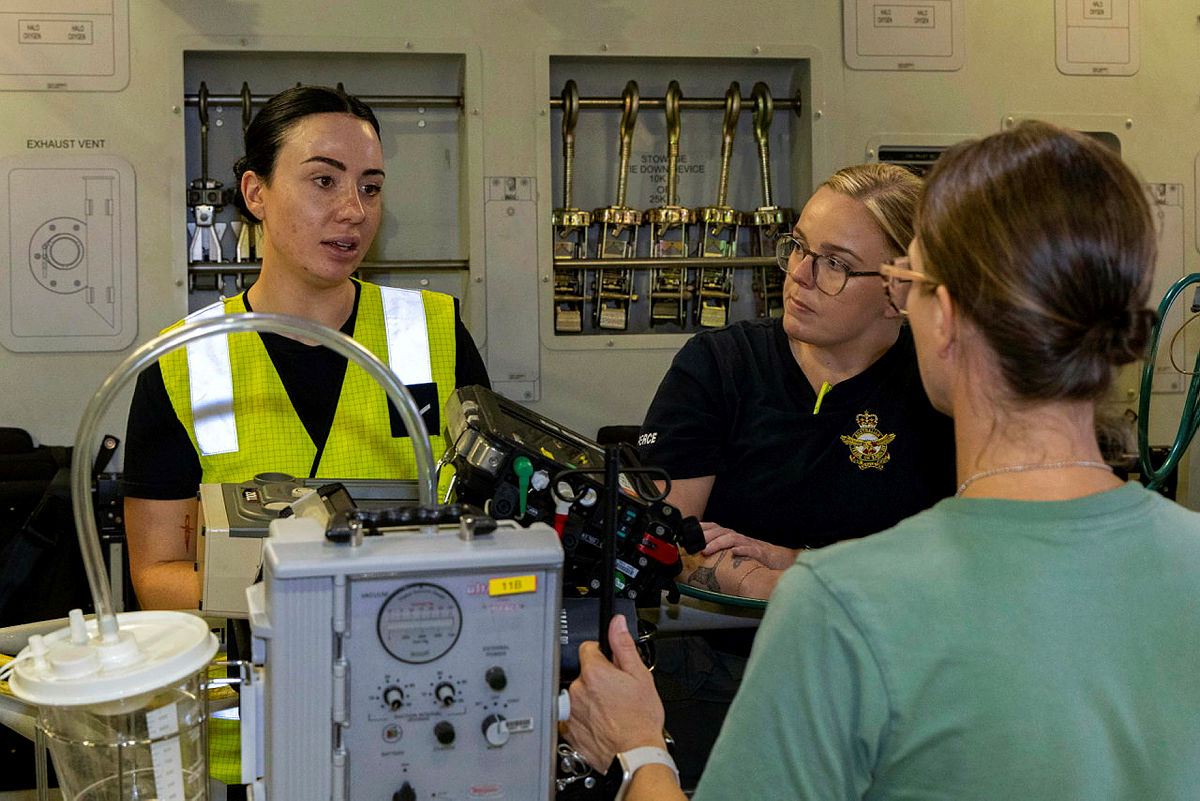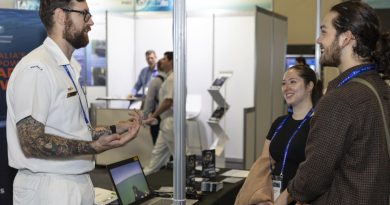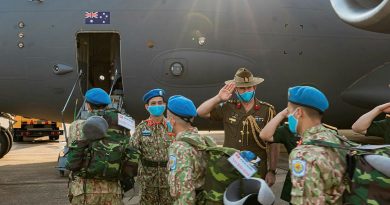RAAF aims high in combat casualty care

Getting ‘comfortable with the uncomfortable’ was the objective for specialist reserve and permanent Royal Australian Air Force health clinicians of 3 Aeromedical Evacuation Squadron (3AES) during their annual Force Generation Culminating Activity.
CAPTION: Squadron Leader Kim Lim, left, of 3 Aeromedical Evacuation Squadron, fits a simulated patient with a bag-valve-mask ventilator on board a C-27J Spartan during the Force Generation Culminating Activity at RAAF Base Amberley. Story by Flight Lieutenant Deanna Ellick. Photos by Leading Aircraftman Campbell Latch.
Conducted at RAAF Base Amberley, the comprehensive training activity comprised about 100 medical personnel and security forces personnel from 1 Security Forces Squadron (1SECFOR).
Medical officer and 3AES military critical care aeromedical evacuation team instructor Wing Commander Cat Balfour said the training enabled the team to practise real-life scenarios in a different environment.
“In comparison to a hospital, working in the back of an aircraft is noisy, cold, you get a lot of vibration and you can’t communicate with your patients as you would normally,” Wing Commander Balfour said.
“There are also things that can affect your patients with changes in altitude, so there are all sorts of challenges in the aeromedical environment.”
CAPTION: RAAF personnel from 3 Aeromedical Evacuation Squadron and 1 Security Forces Squadron prepare a stretcher carry of a simulated patient.
To simulate an aeromedical evacuation, 3AES health clinicians completed a number of configuration exercises across various Royal Australian Air Force aircraft, including the C-130J Hercules, C-27J Spartan and C-17A Globemaster III.
CAPTION:RAAF personnel provide simulated inflight care on board a C-17A Globemaster III.
3AES medical technician and activity planner Corporal Courtney Steer said crucial components of the culminating activity were the scenarios designed to prepare for unknown environments.
“Simulating a non-permissive environment is something that is unfamiliar for a lot of personnel,” Corporal Steer said.
“To achieve this, we worked with subject matter experts at 1SECFOR to create this element; complete with subject matter experts and weapons to simulate a threat environment.
“This enabled our team to practise tactical combat casualty care processes and understand how AE integrates with security forces in such settings.”
Another benefit of the annual activity is integrating specialist reserve and permanent Royal Australian Air Force personnel to share knowledge and skills.
“From our permanent workforce, we have medical technicians, nurses and doctors and in our reserve workforce, we have critical care specialists that range from intensivists, anaesthetists, psychiatrists, mental health nurses, ED nurses and ED doctors,” Corporal Steer said.
“Reservists bring a great deal to our squadron – they are a critical component in how we conduct our missions, in particular the skill sets that are required.”
For Wing Commander Balfour, sharing her clinical skill sets at 3AES carried personal significance.
“As an operational squadron, 3AES is very busy for both reservists and permanent staff,” she said.
“As specialist reservists, we have many opportunities to conduct real-life missions with the Royal Australian Air Force and that is a huge privilege.”
CAPTION: Leading Aircraftwoman Emily Pierrehumbert, left, and Leading Aircraftwoman Jennifer Gibson, of 3 Aeromedical Evacuation Squadron, are briefed on clinical presentation in flight.
EDITOR’S NOTE: I believe RAAF is deliberately dropping ‘Royal Australian’ from its name – despite Defence formally assuring us it isn’t true. Campaigning against this name-change-by-stealth, CONTACT has amended this report appropriately. See here for the back story
.
.

.
.

